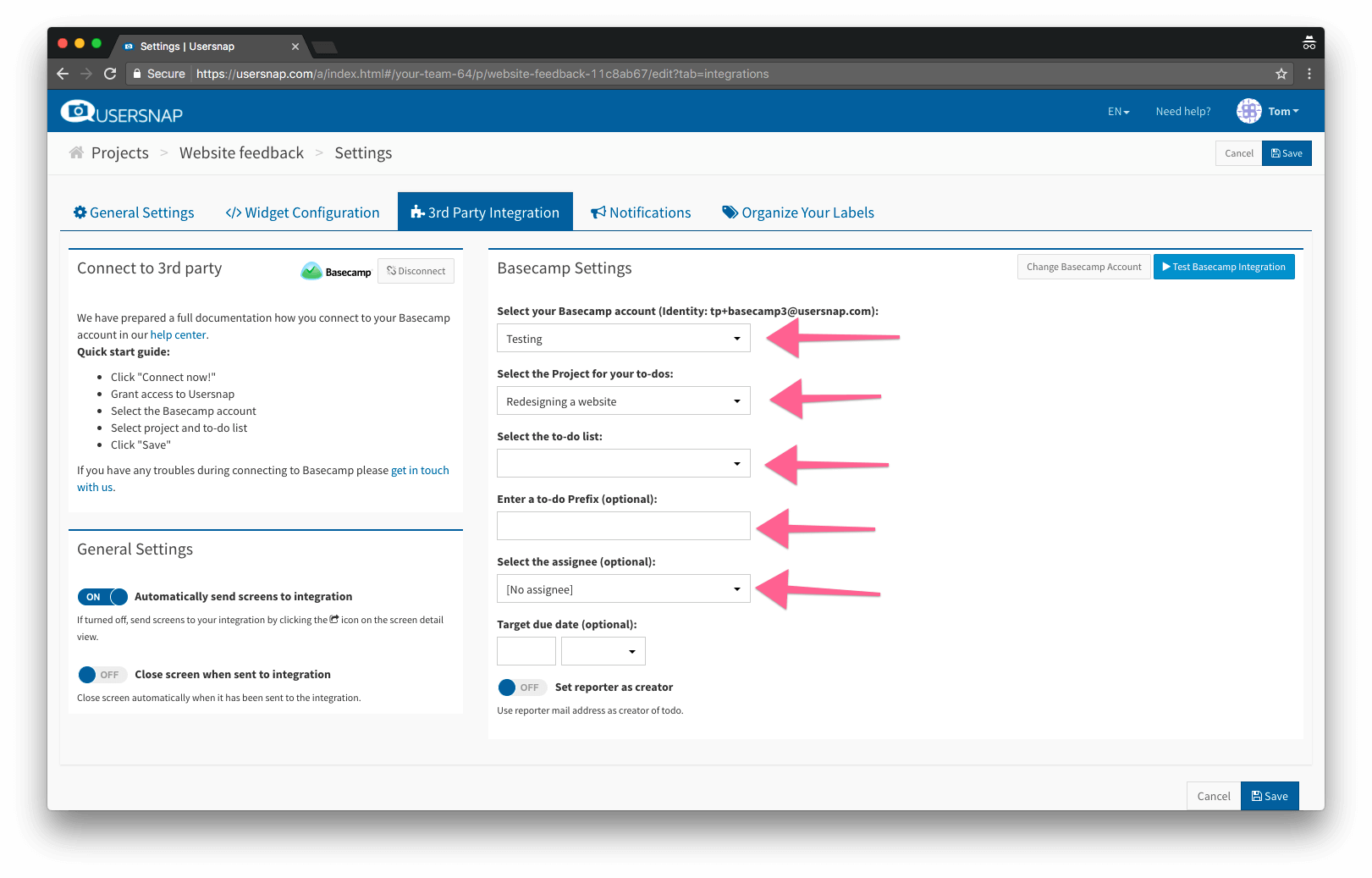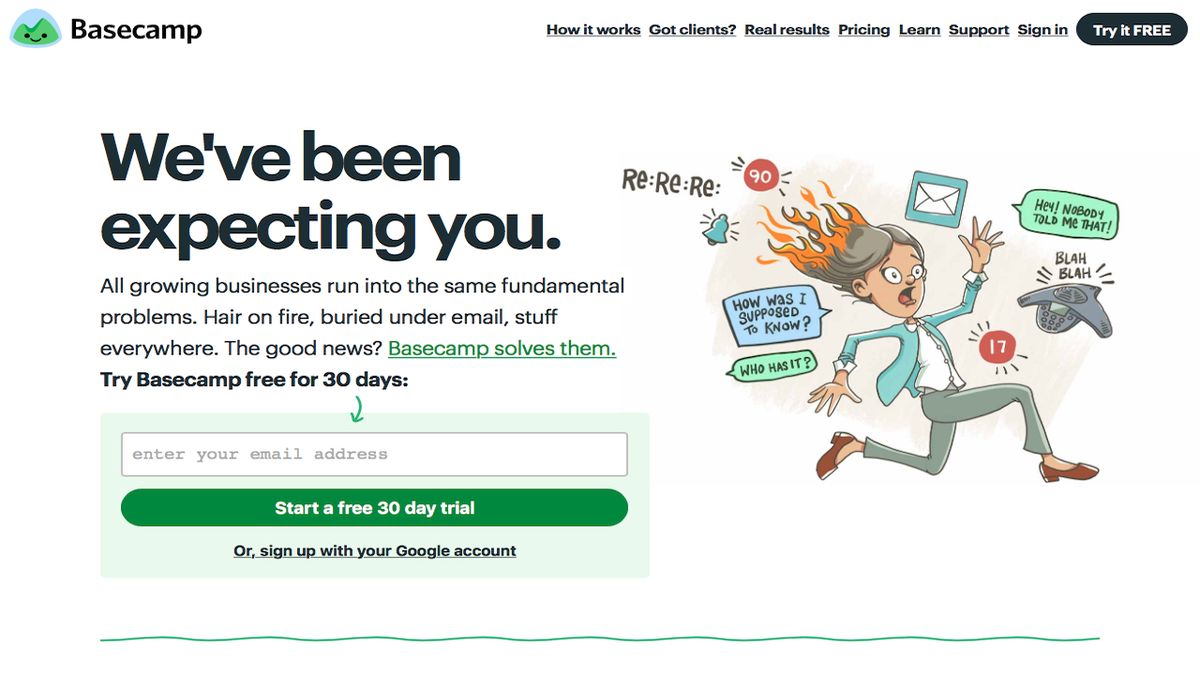

In addition to online support with a five-minute email response time during business hours (I tried it and it works), Basecamp offers an online help center for all their products.

You can expect the list of Basecamp 3 integrations to grow as more developers get on board, but if you're using a Basecamp 2 integration that is vital to your business and it or an equivalent hasn't yet been released for Basecamp 3, you'll want to stick with what you're using.
#BASECAMP 3 INTEGRATIONS FREE#
You can get a $150 credit on your account for upgrading to Basecamp 3 from Basecamp 2.īoth versions are free for teachers and students, and nonprofits get a 10% discount. $150/month for unlimited projects and 100 GB of storageīasecamp 3, on the other hand, has a flat price of $99/month for unlimited projects and 100 GB of storage, or $999/year (about $83/month).īasecamp 2 includes a 60-day free trial, while Basecamp 3 offers a 30-day free trial. $100/month for 100 projects and 40 GB of storage $50/month for 40 projects and 15 GB of storage $20/month for 10 projects and 3 GB of storage All Basecamp plans include unlimited users. Generally speaking, Basecamp 2 is a little cheaper than Basecamp 3.
#BASECAMP 3 INTEGRATIONS SOFTWARE#
While most Software as a Service (SaaS) packages have tiered pricing based on number of users, extra features, or amount of storage, the Basecamp model is a little different, as we'll detail below. Which leads us back to the main question: what's the difference between Basecamp 2 and Basecamp 3? 1. Basecamp 2 is still supported and still has plenty of fans, but Basecamp 3 is the place to be for any new updates. Two years later, Basecamp 3 was released and did to Basecamp 2 what Basecamp 2 once did to Basecamp Classic. Your iPhone 3 might still work and they can help you with it at the Apple store if you have a problem, but don't expect any new features. Think of it as the difference between an iPhone 3 and an iPhone 7. However, if you're a big fan of mid-2000's technology, you're welcome to continue using Basecamp Classic: Basecamp says they'll continue to support it as long as there is an internet. It's actually still supported, but Basecamp Classic hasn't seen any new features in more than five years and Basecamp has no plans to update. With that release-which included a sleek new interface, discussion board, and other collaboration features-original Basecamp became Basecamp Classic. While Basecamp 2 and Basecamp 3 are the company's flagship project management products, Basecamp Classic is still available as well.Ĭonfused yet? Let's try to simplify things.īack in 2012, Basecamp released what would eventually become Basecamp 2 (it was initially called Basecamp Next, but this has gotten confusing enough already). The company released Basecamp in 2004 and officially changed its name to Basecamp in 2014. Basecamp 3īasecamp, which began as 37signals in Chicago in 1999, is one of the more established project management software companies on the market.

Let's take a look at what features Basecamp 3 has that Basecamp 2 doesn't, and vice-versa. What is Basecamp 3 lacking and what does Basecamp 2 still do so well that users won't let it go, even with the enticement of a $150 credit? While Basecamp 3 is the latest and greatest offering, Basecamp 2 still has plenty of loyal users who have no plans to upgrade, and Basecamp has no plans to take it away. Basecamp is one of the most popular project management products available, with 15 million users and almost 20 years on the market.Īs a software buyer, you may wonder if Basecamp 3 is worth the investment, or if Basecamp 2 might be all you need.

If you're a fan of project management software, the release of Basecamp 3 back in 2014 was like the equivalent of five Madden release days all at once. (Who could forget the exciting Salary Cap feature added in Madden NFL 97 or the groundbreaking "Longshot" story mode in Madden NFL 18?) Every year for the past 25+ years, a new version of the John Madden video game football franchise has been released.īack in the early 1990s, those new versions didn't amount to much more than updated rosters, more plays in the playbook, marginally improved graphics, and maybe a new gameplay feature.


 0 kommentar(er)
0 kommentar(er)
